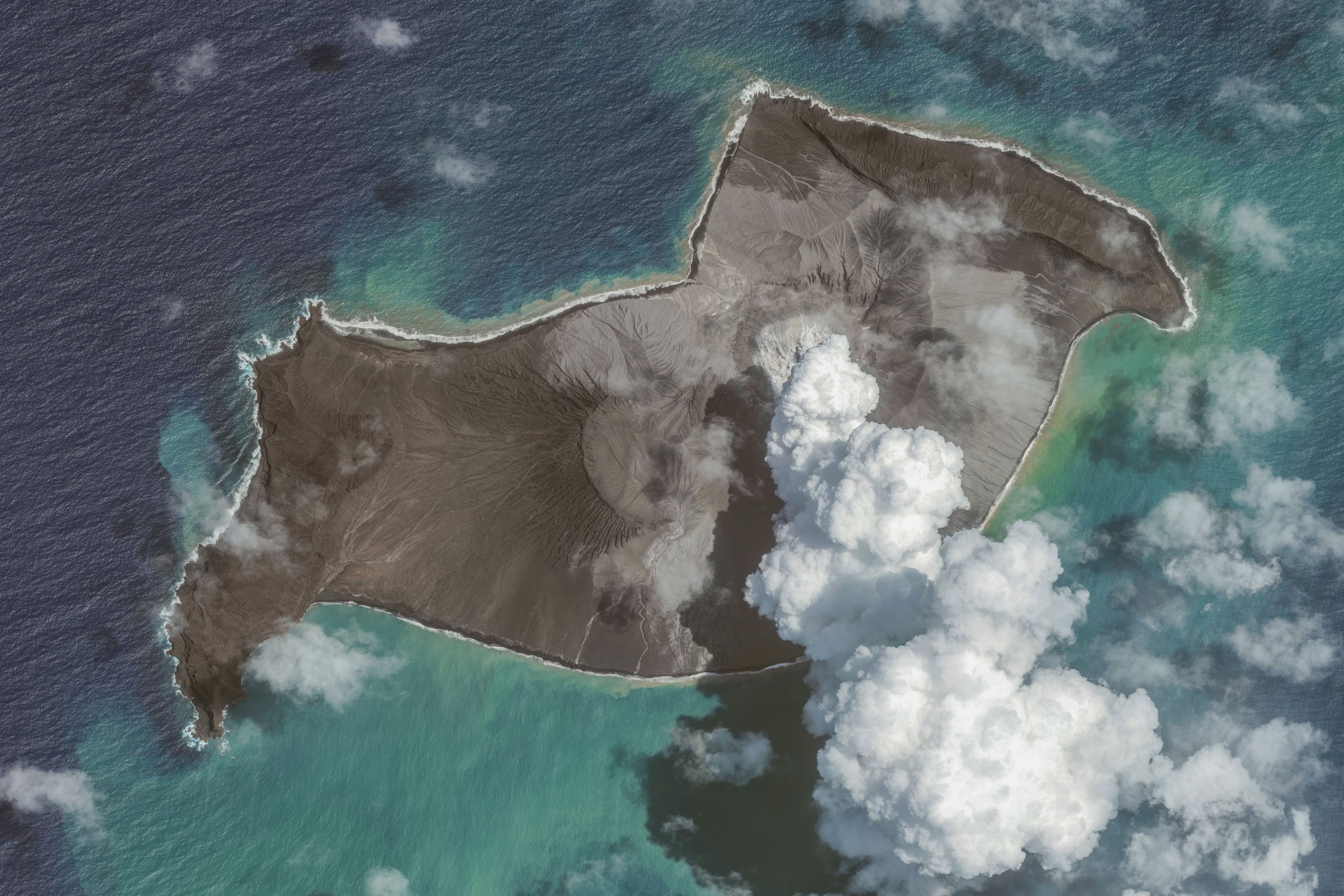.jpg)
The Tonga Eruption Is Still Revealing New Volcanic Dangers
It’s clear that Hunga involved an unusually explosive recipe that may not be easily replicated. For about a month, the eruption had progressed as expected—moderately violent, with gas and ash, but manageable. Then everything went sideways. That appears to be the result of at least two factors, Cronin says. One was the mixing of sources of magma with slightly different chemical compositions down below. As these interacted, they produced gasses, expanding the volume of the magma within the confines of the rock. Under tremendous pressure, the rocks above began to crack, allowing the cold seawater to seep in. “The seawater added the extra spice, if you like,” Cronin says. A massive explosion ensued—two of them actually—which blew trillions of tons of material straight out through the top of the caldera, some of it apparently all the way to space.
Both of those explosions produced big tsunamis. But the biggest wave came later—potentially caused, Cronin thinks, by water flooding into the kilometer-deep hole suddenly dug out of the seafloor. “That’s something really new for us,” he says—a new type of threat to consider elsewhere. Previously, scientists thought that this kind of volcano could only really produce a big tsunami if a side of a caldera collapsed. The bottom line, he says, is that submarine volcanoes are more diverse, and in some cases more capable of extreme behavior, than anyone thought.
But the process of piecing the eruption together has also highlighted the challenges of studying submarine volcanoes. A typical mapping expedition will involve a large, fully crewed research vessel, equipped with multibeam sonar that maps the seafloor for changes and a battery of water sampling instruments that search for chemical signs of ongoing activity. But taking a boat over a potentially active caldera is risky—not so much because the volcano might blow, but because the gas bubbles burbling up might cause a ship to sink. In Tonga, researchers solved that problem with smaller ships and an autonomous vessel.
Even Tonga, which has been visited four times in the past year due to an influx of research funding to groups studying the eruption, isn’t likely to get another big crewed mission in the next few years, Cronin says. The cost is just so high. It would likely take decades to survey every volcano in detail, even just those in the Tongan arc. This is a shame, Walker says, because those kinds of expeditions are one of the few ways scientists get close enough to actually see how volcanoes are behaving. An ideal scenario would involve more funding for those missions, as well as investment in improving new technology, like the autonomous vessels, which can be tricky to operate in the treacherous open ocean.
Without them, scientists are stuck watching from a distance. This is hard to do when you’re trying to observe underwater events—but not impossible. Satellite technology can spot objects known as pumice rafts—sheets of buoyant volcanic rock that bob on the water’s surface—as well as algal blooms, which are nurtured by the minerals released by volcanoes. And the USGS, as well as counterparts in Australia, are in the process of installing a network of sensors around Tonga that can better detect volcanic activity, combining seismic stations with sound sensors and webcams that watch for active explosions. Ensuring it stays up and running will be a challenge, Lowenstern says—a matter of keeping the systems connected to data and to power sources and ensuring Tonga can staff the facilities. He adds that Tonga is just one of many Pacific nations that could use the help. But it’s a start.
One of the benefits of studying the Hunga volcano so closely is that researchers have now identified new volcanic features to watch out for. Over the next few years, Cronin foresees a process of identifying which volcanoes require more attention. On their final Hunga voyage of 2022, Cronin’s team made use of the time on the ship to visit two other submarine volcanoes in the area, including one about 100 miles north with a mesa-like topography that resembles Hunga before its eruption. The maps will be a baseline for future surveys that manage to get out on the water, a way for researchers to figure out how much action is happening underneath sea and rock. So far, Cronin reports, the ocean is quiet.

